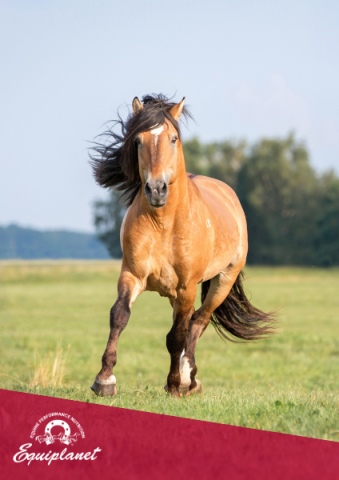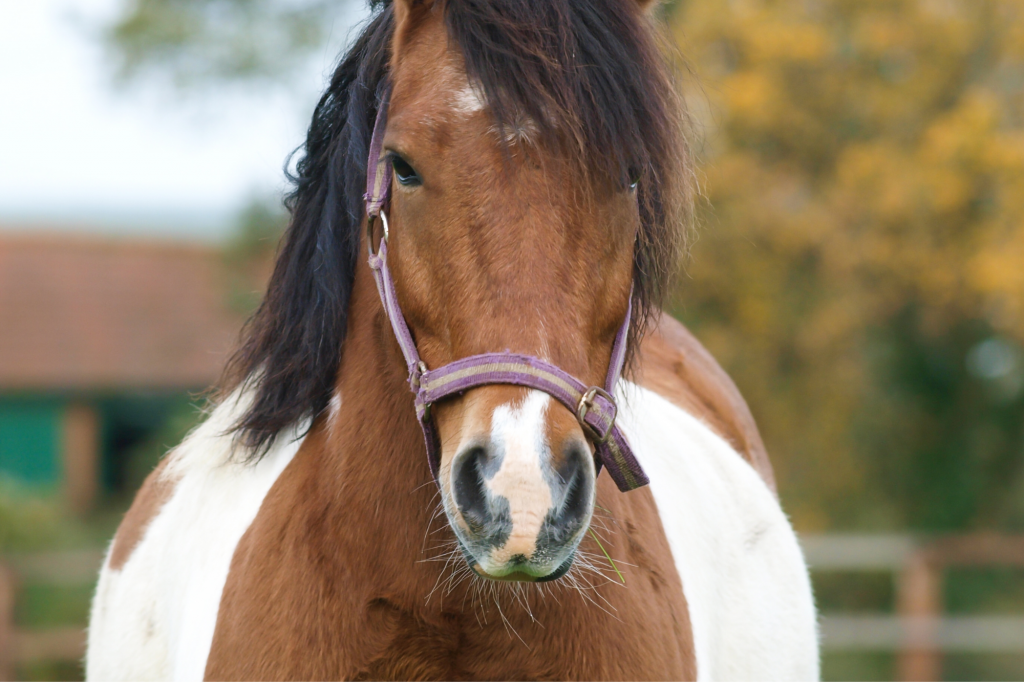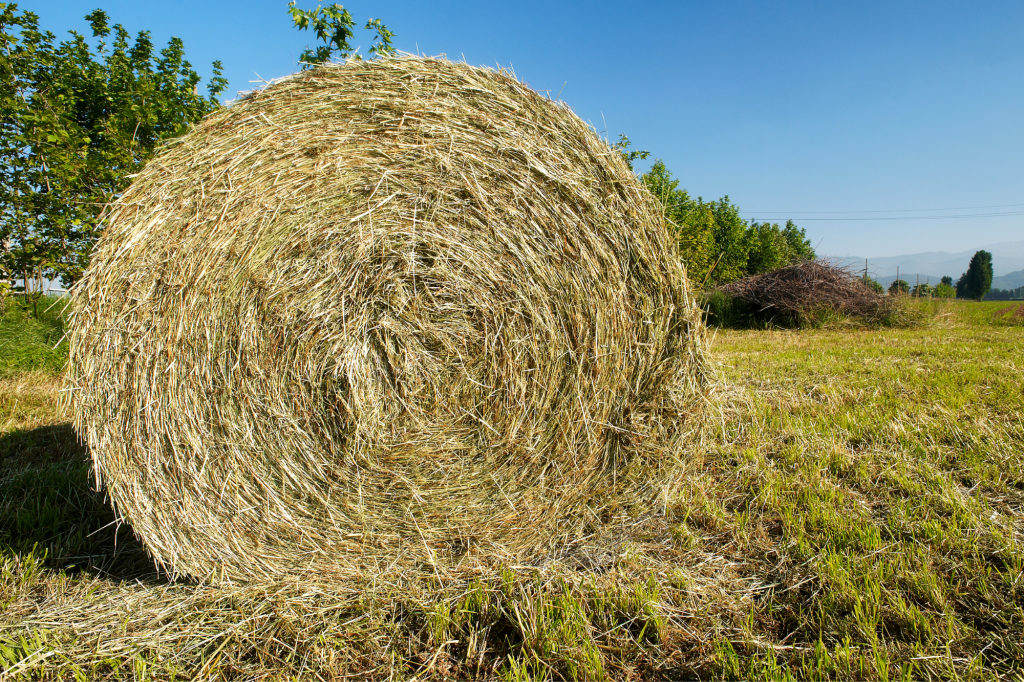
Transport stress in the horse
26 July 2022
Vitamins in horse nutrition
25 October 2022Overweight horse

how to regain a good shape with Equiplanet
Obesity in equines occurs in about 30% of the equine population in industrialised countries and negatively affects health. Despite this, it is still an underestimated problem in horses. There are breed (e.g. Irish, Andalusian), discipline (show and dressage) and even seasonal (spring) predispositions, which is why it is best to know in detail how to improve the wellbeing of overweight horses, learning to recognise it and implementing measures to curb commonly encountered errors in stables or breeding

What are the risks for an overweight horse?
Overweight and obese horses are more likely to develop myocardial hypertrophy, to develop complications following abdominal surgery and delays in recovery after metabolic dysfunction. Foals born to obese mares may have a higher risk of developing orthopaedic problems and insulin dysregulation. Breathing may also be more difficult and the extra weight hinders the horse’s work and increases the risk of injury.
How to recognise an overweight or obese horse?
The most common and practical method for recognising an overweight or obese horse is the Body Condition Score (BCS), which in Anglo-Saxon countries ranges from 1 to 9 points. Six anatomical zones are examined by assessing the horse laterally and posteriorly: neck, withers, kidney area, tail hairline, ribs and shoulders.

It is a subjective assessment of subcutaneous fat mass where 1 indicates cachexia and 9 indicates obesity. An overweight horse will have a BCS of 7 and a body fat percentage of more than 20% although there are few studies that differentiate between overweight and obese horses. An active sport horse has a BCS between 4 and 6.
How to make an overweight or obese horse lose weight?
Rationally one might think that to make an overweight or obese horse lose weight, it is sufficient to reduce the ration and increase movement. However, it is not advisable to feed less than 1.25% body weight in dry matter per day (7.5 kg dry matter for a 600 kg horse). In fact, rather than reducing the ration, we should aim at energy restriction while meeting essential nutrient requirements and managing satiety.

What can we do?
It may be sufficient to change the amount or type of feed to one that is less calorific, limit grazing and possibly increase the exercise load. Although grazing is crucial for a horse’s gastrointestinal health, caloric intake and ability to exercise and socialise, too much can lead to obesity. Ways to limit horses’ intake of pasture include grazing muzzles and reducing time spent in the paddock. But for horses that live outdoors 24 hours a day, reducing grazing space alone can affect weight loss.
Supporting the gastrointestinal health of the overweight horse

Maintaining a sense of satiety is critical and to respect the horse’s gastrointestinal physiology, maximising chewing time becomes essential. This prevents episodes of gastric hyperacidity from occurring and helps support gastrointestinal health, preventing the development of stereotypes and behavioural alterations.
Is it sufficient to feed only hay to an overweight – obese horse?
The objective of a feeding plan for overweight horses is to decrease fat mass while minimising the loss of lean tissue, such as muscle. Meeting, or exceeding, protein requirements is important for maintaining lean muscle mass, which in turn has a positive influence on basal metabolism. Feeding fodder alone is not sufficient to guarantee protein requirements, let alone those in vitamins and minerals, which is why it is suggested to include a balancing complementary feed such as Mac Breed in the ration.

How to promote satiety in an overweight horse?
It is certainly forage intake that promotes satiety in the overweight horse. A forage with a medium to low caloric density is ideal, as it allows a better balance between energy restriction and satiety maintenance.

For obese equines, the forage should be grasses, and it is best to avoid pelleted or cubed commercial products, except in cases where the horse exhibits poor dentition. More mature forages are richer in cell wall structural fibres. In particular, ADF (acid-deterred fibre) is a negative indicator of forage digestibility. Unfortunately, hay is sold without accompanying analyses, with which we can tell whether or not it is suitable for our horses, beyond a visual and olfactory evaluation.

We can argue that forages with NDF (neutral detersed fibre) less than 65% and ADF less than 45% are considered acceptable for normal weight and healthy adult horses. The higher the ADF and NDF, the more satiety the hay will provide. Hay nets can slow the rate of intake and prolong meal time, which is especially important when limiting daily dry matter.
Increasing exercise in the active horse?

In sport horses, one must carefully consider whether to increase exercise, trivially by increasing the frequency of activity on the carousel, because it may adversely affect joint balance. It is best to discuss this with the various figures that follow the horse and consider the overall picture. To support the joints in this phase, it is recommended to provide joint support nutrients such as Artro Gag or Joint Flex, complementary feeds based on Glucosamine, MSM and Chondroitin Sulphate, as overweight represents a supplementary stress for the joints.
Is there an association between gut microbiota and obesity?

Although an association between obesity and gut microbiota has been established in other species, the role of gut microorganisms in overweight horses is unclear. However, it appears that the gut microbiota of lean equines is different from that of overweight horses. Micro-organisms enable horses to obtain a significant amount of energy through intestinal fermentations: more than 50% of the daily requirement. Further research is needed to further clarify the link between gut micro-organisms, obesity and metabolism, but the use of complementary feeds containing prebiotics and probiotics, such as Enterovet, in rations remains recommended.
Overweight and obese horses: how to promote the lean mass/fat mass ratio?
This is easier in horses undergoing sporting activity by enhancing muscle mass. We have already talked about the use of balancers, but there are complementary powdered feeds containing gamma-oryzanol, which exerts antioxidant activity and intervenes by modulating fat deposition, favouring the physical-muscular balance of the sport horse. Sprint, in addition to gamma-oryzanol also contains octacosanol, which helps counteract obesity and improves liver metabolism.

Another substance that is useful in the overweight sports horse is carnitine. It has an ergogenic effect, i.e. it is able to bring about an improvement in physical performance due to its involvement in fat metabolism. Carnitine, in fact, acts as a carrier for the bidirectional transport of activated fatty acids across internal mitochondrial membranes. The use of Horse Carnitine Gel in the active horse may be useful in increasing the utilisation of fatty acids and delaying the onset of fatigue.
In conclusion, if a horse is overweight, its ability to perform any activity, competitive or otherwise, will be compromised. It is necessary to seek expert advice to draw up a detailed weight loss plan that takes into account the nuances of each individual and the resources available.
If you need advice, do not hesitate to contact us by sending an e-mail to info@equiplanet.it
Follow us on Facebook and Instagram to stay updated on all Equiplanet news.
Bibliography
- Influence of dietary restriction and low-intensity exercise on weight loss and insulin sensitivity in obese equids. Nicholas J Bamford, 2019
- Nutritional Considerations When Dealing with an Obese Adult Equine. Megan Shepherd, 2020
- Octacosanol and policosanol prevent high-fat diet-induced obesity and metabolic disorders by activating brown adipose tissue and improving liver metabolism. Rahul Sharma, 2019
- In vitro and in vivo study of octacosanol metabolism. Roberto Menéndez, 2005
- Metabolic functions of L-carnitine and its effects as feed additive in horses. A review. A Zeyner, 1999

